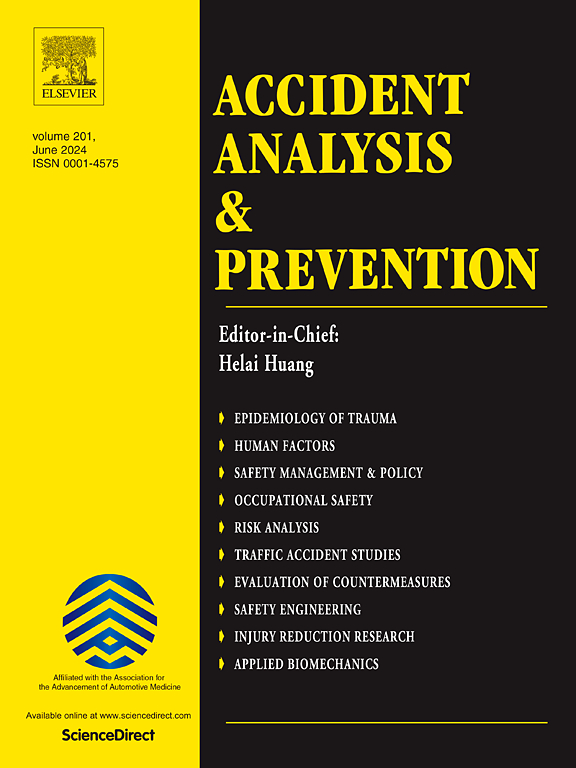Does visual-audio feedback impair response performance and increase workload? using detection response task and NASA-TLX to examine the effect of the HMI information on driver performance at unsignalized intersections
IF 5.7
1区 工程技术
Q1 ERGONOMICS
引用次数: 0
Abstract
The in-vehicle HMI systems regulate driving behavior by providing advisory or warning information to the driver, contributing to improved safety, reduced fuel consumption, and lower emissions. Although the issue of driver performance changes caused by HMI systems has received substantial recent attention, the implications on drivers’ workload has not received enough attention. Additionally, most previous studies provided classic visual, auditory or concurrent visual-audio feedback information but failed to determine whether the additional information resulted in workload overload, and lacked the quantitative analysis of response performance in various conflict environments. Toward to this end, this paper conducted a driving simulator experiment to examine the response performance and workload differences in the unsignalized intersection-approach process of drivers with various HMI system and conflict conditions. More precisely, an effect analysis on the drivers’ workload (response time of the DRT, DRT accuracy, and the NASA-TLX) was conducted, the Weibull AFT model with gamma heterogeneity and rANOVA method were applied. The Weibull AFT model estimation revealed the mixed effects of HMI system conditions in the drivers’ response time. In conflict situations, drivers with comprehensive visual-audio information responded earlier to DRT and lower workload. In addition, the variables for personal characteristics, safe driving history, and experience and willingness to use HMI system significantly influenced the response time of driver, among which female driver group performed longer response time. The results of DRT accuracy and NASA-TLX, drivers with comprehensive visual-audio information have excellent situation awareness when approaching and passing the unsignalized intersections; drivers believed they can accomplish performance level with less effort than others; they felt less time pressure and the driving pace was pace slow and relatively leisurely; there were fewer negative emotions such as insecure, discouraged, irritated, stressed, and annoyed. Thus, the key is whether a comprehensive situation awareness can be established for the driver, rather than purely reducing or adding additional information. The findings of this paper provide a theoretical basis for the human–machine interaction interface design and development of in-vehicle decision-making assistance systems for unsignalized intersections.
求助全文
约1分钟内获得全文
求助全文
来源期刊

Accident; analysis and prevention
Multiple-
CiteScore
11.90
自引率
16.90%
发文量
264
审稿时长
48 days
期刊介绍:
Accident Analysis & Prevention provides wide coverage of the general areas relating to accidental injury and damage, including the pre-injury and immediate post-injury phases. Published papers deal with medical, legal, economic, educational, behavioral, theoretical or empirical aspects of transportation accidents, as well as with accidents at other sites. Selected topics within the scope of the Journal may include: studies of human, environmental and vehicular factors influencing the occurrence, type and severity of accidents and injury; the design, implementation and evaluation of countermeasures; biomechanics of impact and human tolerance limits to injury; modelling and statistical analysis of accident data; policy, planning and decision-making in safety.
 求助内容:
求助内容: 应助结果提醒方式:
应助结果提醒方式:


